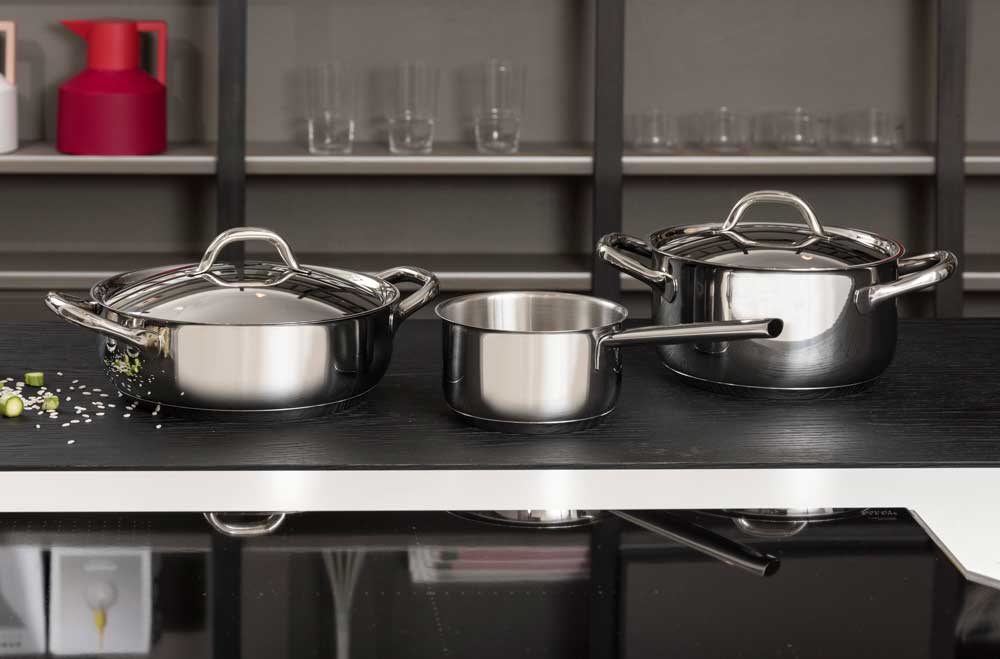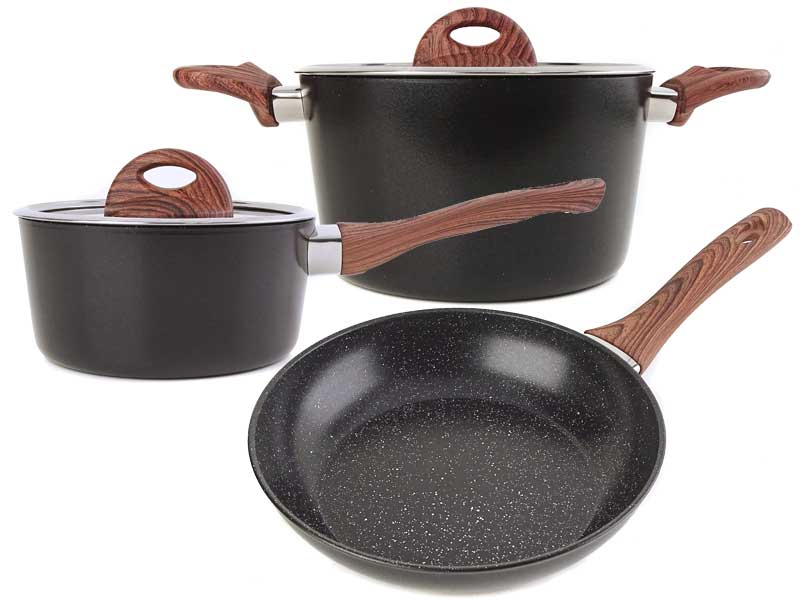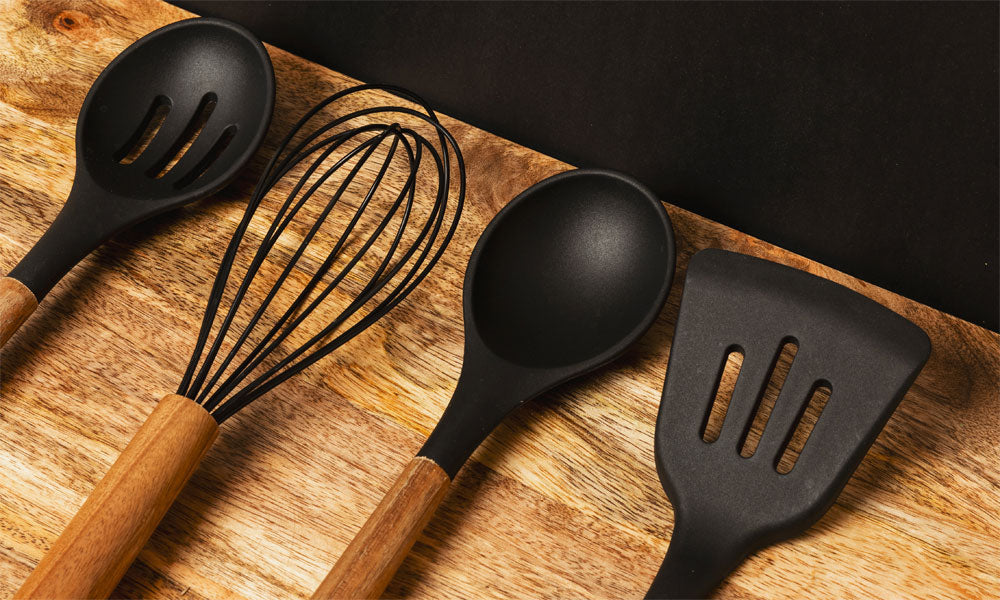aluminum
Aluminum is one of the most popular materials for cookware because it has many good properties. Aluminum conducts heat very well, is light and easy to form or cast. Almost without exception, aluminum cookware is always coated, either with a non-stick coating (PTFE) or with a ceramic coating.
Cast aluminum and aluminum - what's the difference?
There is a fundamental difference in the way aluminum cookware is manufactured: on the one hand, aluminum cookware can be pressed or cold-forged from aluminum sheets. On the other hand, aluminum cookware can be cast from molten aluminum, referred to as cast aluminum for short.
Cast aluminum cookware
As the name suggests, cast aluminum is cast aluminium. So to make a cast aluminum pan, pot or roaster, an aluminum alloy is melted by heating it up and then poured into a mold. The standard here is the die-casting process, in which the aluminum is pressed into the mold under pressure. With this process, even complex shapes can be cast safely.
There is also manual casting for simpler shapes, in which gravity alone distributes the melt in the mould.
Benefits of cast aluminum
With cast aluminum, different wall thicknesses can easily be achieved in cookware, e.g. a thick base that distributes and stores heat well, a thin side wall that saves weight and does not absorb too much heat unnecessarily, and finally a strong rim that gives the cookware stability. Another advantage of cast aluminum is the fact that it is largely free of material stresses. The cookware is poured into a liquid form and cooled. A transformation is not necessary. Since aluminum expands quite a bit when heated, it is an advantage if the resulting material stresses in the cookware are not also stressed by forming.
Disadvantages of cast aluminum
The manufacturing process is usually more expensive and so is the end product. Also, the surface of cast aluminum cookware can sometimes show marks from the casting process, namely small indentations or marks resulting from the mould.
Pressed / forged aluminum cookware
Aluminum pans and pots that are not made of cast aluminum are not cast, but pressed or forged. To do this, a piece is punched out of an aluminum sheet and then pressed into shape or cold forged with a great deal of force.
Above all, pressing is mainly used for rather inexpensive products, which usually have a wall thickness of only 2-3 mm.
Cookware made of forged aluminum has a changed, more stable material structure due to the forging process, in which much more force is applied to the aluminum than when pressing. Cookware made from forged aluminum is therefore generally more robust than one made from pressed aluminium. More complex structures can also be achieved during forging, such as a reinforced edge, which is actually typical for cast aluminum.
Benefits of pressed/forged aluminum cookware
Pots and pans made of pressed / forged aluminum are usually cheaper than those made of cast aluminium.
Disadvantages of pressed/forged aluminum cookware
Even when cold, cookware made of formed aluminum already has certain internal stresses in the material, because the actually flat aluminum plate was forced into a pan or pot-shaped shape. In addition to these material stresses, there are also the stresses of thermal expansion during use. Especially with thin material, in extreme situations (e.g. overheating or extremely uneven heating due to incorrect positioning on the hob), permanent deformation of the base can tend to occur.
aluminum and induction
Aluminum is not ferromagnetic, so aluminum cookware cannot be used on normal induction cooktops. There are various techniques to make it usable on the increasingly popular induction hobs. The most common technique is to apply a ferromagnetic stainless steel disc to the bottom of the aluminum cookware. This can be done by knocking on or pouring in a perforated stainless steel blank or by welding a full-surface stainless steel blank.
Please note that the diameter of the stainless steel disc on the bottom is often a little smaller than that of the bottom, especially with perforated discs. Where this applies, you will find the corresponding information in our item descriptions.
Aluminum is easily recyclable
Aluminum (regardless of whether it is cast, pressed or forged) has the great advantage that it is very easy to recycle. Due to the relatively low melting point compared to other metals (only 650-700° C), less energy is required. So if you discard a pan or pot made of aluminum / cast aluminum, please put it in the recycling bin. And maybe your cookware will have a future as a new pan or railroad car or engine block or railing or blind or......





